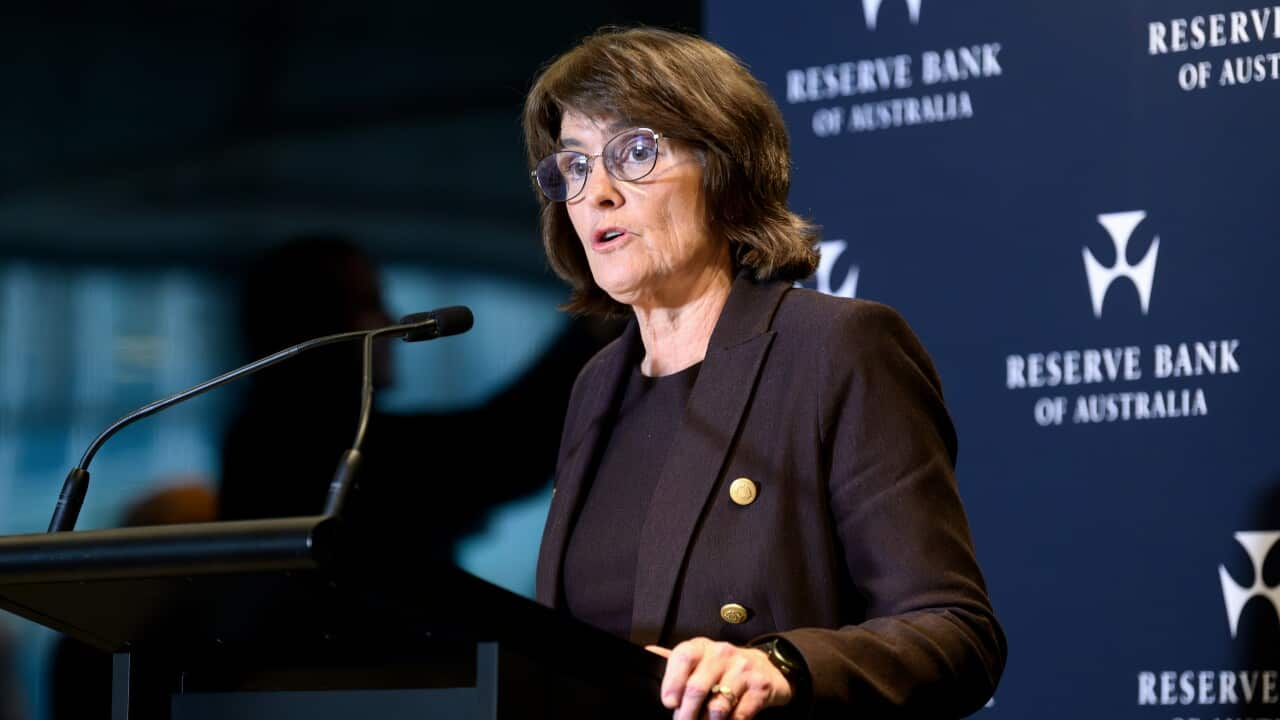Hopes have been dashed for an interest rate cut before Christmas after inflation across the 12 months to October jumped 3.8 per cent, up from 3.6 per cent in September.
Australian Bureau of Statistics (ABS) data released on Wednesday found that while inflation remained flat in the month of October, the annualised jump in consumer price index (CPI) was above the Reserve Bank of Australia's (RBA) goal of 2-3 per cent.
The trimmed mean CPI, a measure of underlying inflation that removes the biggest price swings, also rose, from 3.2 to 3.3 per cent.
Economist Shane Oliver said the figures were "disappointing".
"I was a bit surprised the numbers were so high," he told SBS News.
"Everything is increasing across the board."
The largest contributing factor to rising inflation was housing inflation, which rose 5.9 per cent, followed by food and non-alcoholic beverages at 3.2 per cent, and recreation and culture, which rose 3.2 per cent.
Economists pointed out that rising housing inflation may have been driven by an increase in electricity over the past 12 months, not just the increased costs of purchasing or renting a home.
What's driving housing inflation
In October, the federal government expanded its Home Guarantee Scheme, which sought to level the playing field for first-home buyers, offering 5 per cent deposits to eligible Australians. At the time, analysts predicted the scheme could drive up house prices.
Oliver said it was "too soon to tell" whether the scheme had contributed to rising inflation, but warned that we could be seeing early effects.
"We've seen both rents and new dwelling prices edge up. We were seeing a nice downtrend in both, but they now seem to be hooking back up again, and that's certainly a concern," he said.
"The basic problem is that we have an ongoing shortage of housing, low vacancy rates, and rapidly rising home prices.
"When you've got a lack of supply, then you've got strong levels of demand, you end up with rising prices."
But former director of economic research at property advertising firm REA Group, Cameron Kushner, said the scheme was "unlikely" to have had an impact on inflation.
"It was the first month in which the scheme was available, and the CPI only measures purchasing of new homes by owner-occupiers — I suspect most first home buyers are choosing to purchase established homes," he told SBS News.
He said monthly housing inflation was low, with a 0.8 per cent fall recorded in October.
"Annual growth in rents and new purchasers by owner-occupiers is lower than a year ago and monthly changes have been steady for some time," he said.
Electricity prices soar
The ABS "housing group" data comprises three elements: the cost of building new dwellings, rents and electricity prices.
Diana Mousina, deputy chief economist at AMP, said while rent and the cost of building new dwellings were "elevated", the hike was mostly driven by a 37.1 per cent rise in electricity costs, due to the implementation and then removal of electricity rebates from state and territory governments.
"It will even out, but it will take some time," Mousina told SBS News.
Kushner also pointed to the take-up of energy rebates in Queensland and Western Australia.
"The introduction of and then the removal of energy rebates is really what is driving housing inflation," he said.
Cash rate disappointment
Data insights director at financial comparison site Canstar, Sally Tindall, said inflation was moving in the wrong direction.
"It’s taken the prospect of another rate cut completely off the table. The Board won’t just dismiss a December cut, it’s unlikely it’ll even entertain the idea," she said in a statement.
"Consumers were hoping for a bit more relief next year, but this latest CPI read has poured cold water over expectations. If anything, the conversation is now shifting to whether the cutting cycle has already run its course, and potentially, what it would take for the central bank to revert back to hikes.
"While the jump in annual electricity and rent inflation was amplified by the timing of government rebates, once you strip out this volatility, it’s clear these essential costs are still climbing."
While the inflation rate was far from the RBA's target between two and three per cent, economists were sure it would not provoke a cash rate increase.
"I'd like to think not," Oliver said.
"The figures further reduce the chance of a rate cut, and ensure there's zero chance of a December cut."
"But we have to wait for the December data to come out in full. I think the economy's recovery will be slower than the RBA is planning for. But that's probably a 2027 story."
Share




